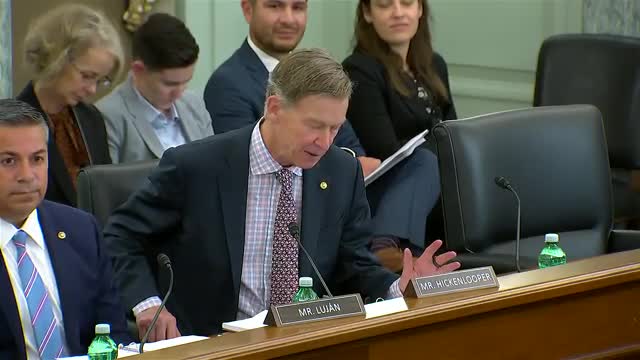Space debris crisis threatens future of commercial space activities
October 18, 2023 | Commerce, Science, and Transportation: Senate Committee, Standing Committees - House & Senate, Congressional Hearings Compilation
This article was created by AI summarizing key points discussed. AI makes mistakes, so for full details and context, please refer to the video of the full meeting. Please report any errors so we can fix them. Report an error »

In a recent government meeting, officials highlighted the urgent need to address the growing threat of space debris, which currently includes over 900,000 pieces of hazardous material traveling at speeds exceeding that of a bullet. This debris poses significant risks not only to the International Space Station but also to human exploration programs, commercial space activities, and satellite constellations.
NASA's former Associate Administrator, Mr. Gerstenmaier, emphasized the importance of developing capabilities to track and remove dangerous debris. He noted that while spacecraft are designed to withstand smaller particles, larger objects require proactive measures. For instance, satellites like Starlink are equipped with automatic collision avoidance systems that allow them to maneuver independently to prevent collisions.
The discussion also touched on the increasing congestion in Low Earth Orbit (LEO) due to the surge in space activities. While this growth is seen as a positive sign for U.S. leadership in space, it raises concerns about collision risks and potential impacts on astronomical observations. Officials underscored the necessity of balancing innovation in space exploration with the responsibility of maintaining a safe operational environment.
Virgin Galactic's representative pointed out the importance of regulations that foster innovation while ensuring safety. The dialogue underscored a collective recognition that without immediate action to manage space debris, the risks associated with space activities could escalate dramatically, potentially hindering future exploration and commercial endeavors.
NASA's former Associate Administrator, Mr. Gerstenmaier, emphasized the importance of developing capabilities to track and remove dangerous debris. He noted that while spacecraft are designed to withstand smaller particles, larger objects require proactive measures. For instance, satellites like Starlink are equipped with automatic collision avoidance systems that allow them to maneuver independently to prevent collisions.
The discussion also touched on the increasing congestion in Low Earth Orbit (LEO) due to the surge in space activities. While this growth is seen as a positive sign for U.S. leadership in space, it raises concerns about collision risks and potential impacts on astronomical observations. Officials underscored the necessity of balancing innovation in space exploration with the responsibility of maintaining a safe operational environment.
Virgin Galactic's representative pointed out the importance of regulations that foster innovation while ensuring safety. The dialogue underscored a collective recognition that without immediate action to manage space debris, the risks associated with space activities could escalate dramatically, potentially hindering future exploration and commercial endeavors.
View the Full Meeting & All Its Details
This article offers just a summary. Unlock complete video, transcripts, and insights as a Founder Member.
✓
Watch full, unedited meeting videos
✓
Search every word spoken in unlimited transcripts
✓
AI summaries & real-time alerts (all government levels)
✓
Permanent access to expanding government content
30-day money-back guarantee
